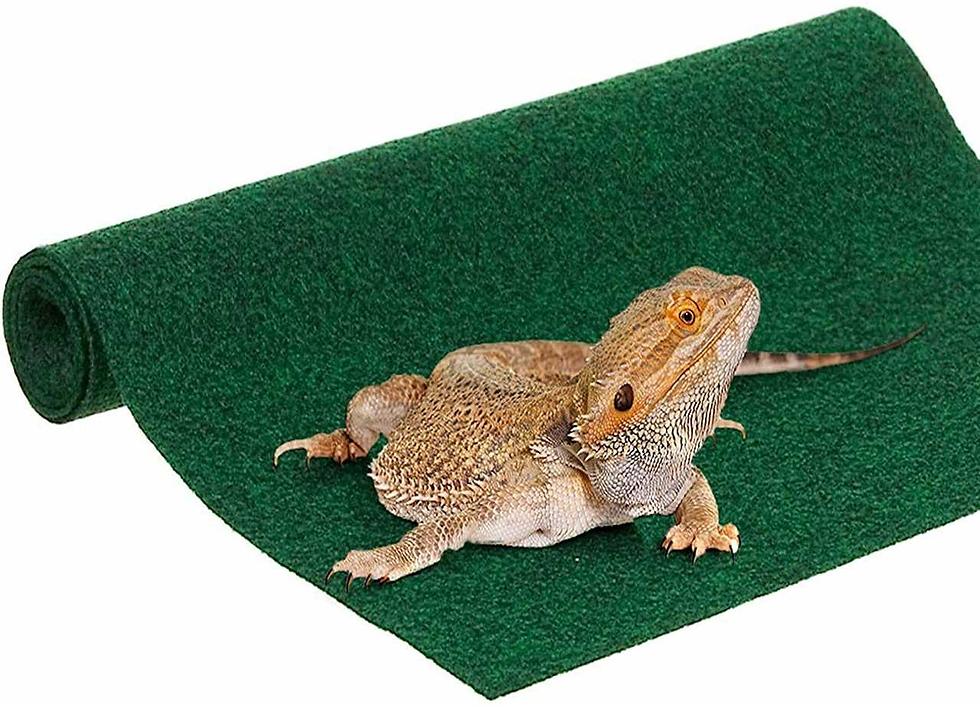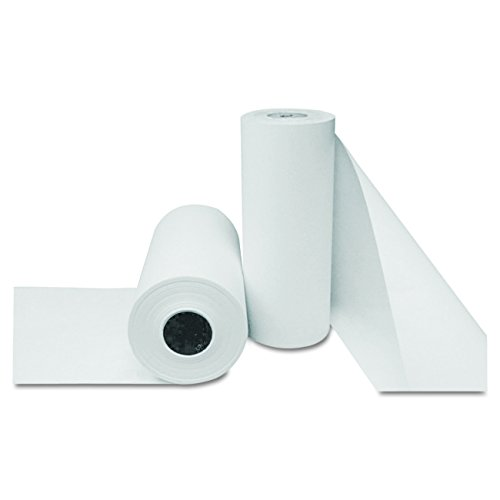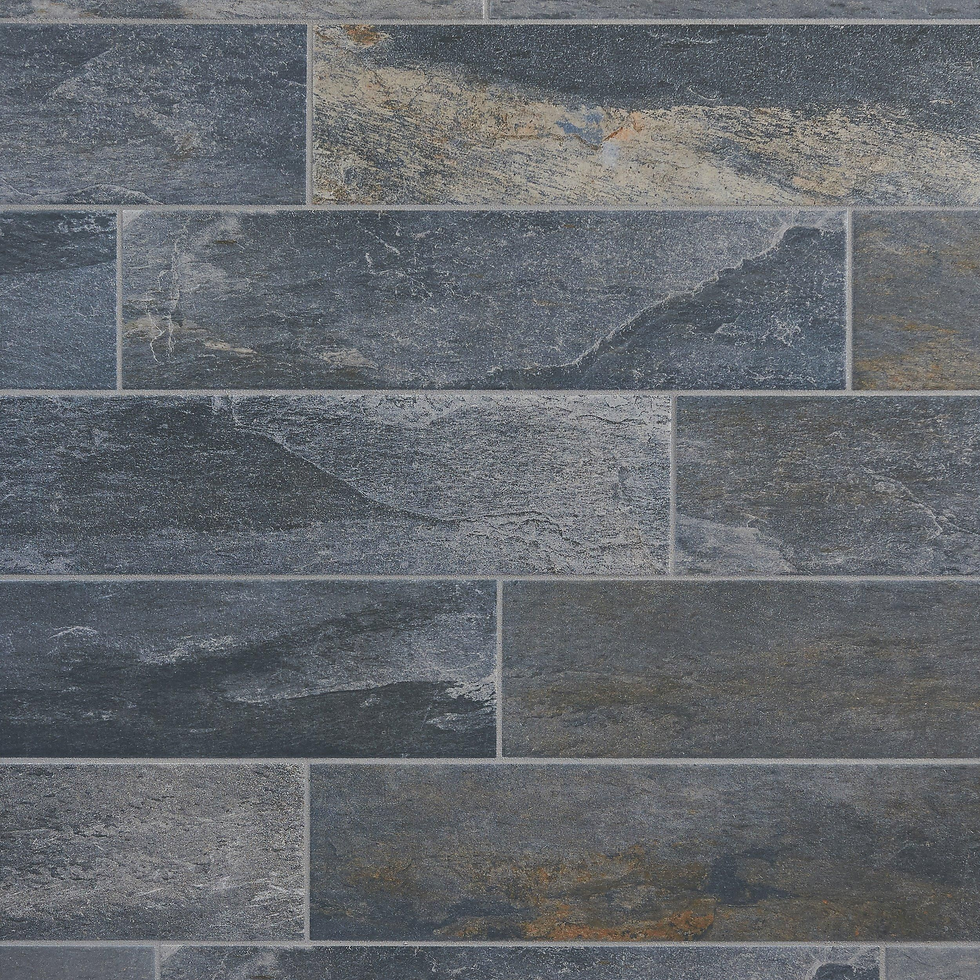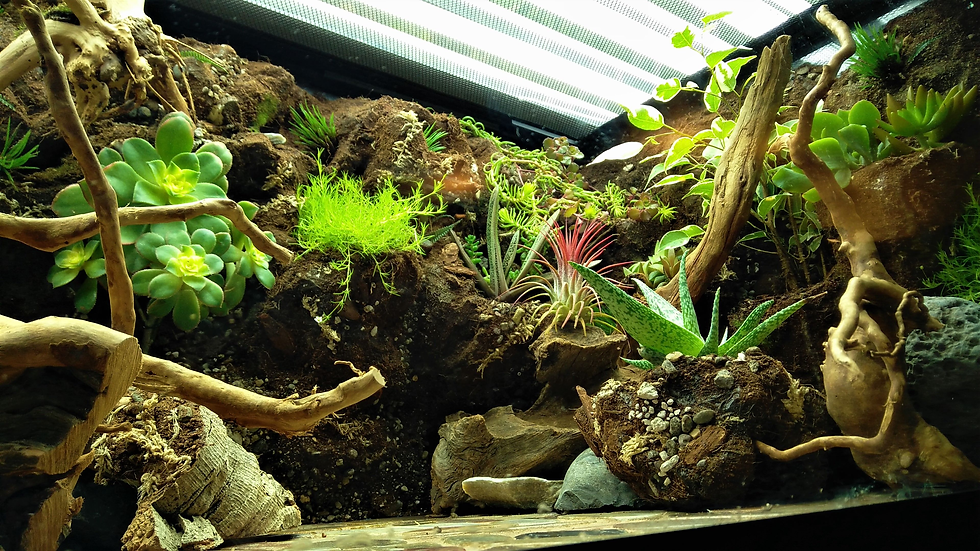How to Set Up a Bearded Dragon Tank: Complete Habitat Guide 🦎
- Iqra Shaikh
- 3 days ago
- 3 min read
📌 What This Blog Contains
Creating a comfortable, naturalistic habitat is key to your bearded dragon's health and happiness. In this detailed enclosure guide, we’ll walk you through everything from tank size to decor, so your dragon can thrive.
📏 Ideal Tank Size & Enclosure Types
Your bearded dragon needs room to roam, bask, and explore.
Baby dragon: 20–40 gallons
Juvenile: 40–75 gallons
Adult: Minimum 75–120 gallons
🪟 Best enclosure types:
Glass terrariums with screen tops (great visibility)
PVC cages (durable, heat-retaining)
Avoid vertical enclosures — beardies are ground dwellers.
✔️ Bigger is always better for adult beardies — aim for at least 4 feet in length.
🔆 Lighting & Heating Essentials
Bearded dragons are desert reptiles — they need warmth and UVB light to thrive.
Basking spot: 95–110°F
Cool side: 75–85°F
Nighttime: Do not drop below 65°F
💡 Lighting setup:
UVB bulb (10.0 strength) across 2/3 of tank
Basking bulb for heat
Keep lights on for 12–14 hours daily
🛠 Replace UVB bulbs every 6 months, even if they still shine.
🧱 Substrate Choices: Safe vs Unsafe
Choosing the right flooring prevents impaction and injury.
✅ Safe options:
Reptile carpet

Paper towels or butcher paper (for babies)

Non-adhesive shelf liner

Ceramic or slate tiles

❌ Avoid:
Sand or calcium sand (impaction risk)
Loose soil
Wood chips or bark
Pro tip: Use tile — it’s easy to clean, looks natural, and helps wear down claws.
🪴 Decor & Enrichment Tips
Make their space feel like home!
Basking rock or branch (under heat lamp)

Hide cave on the cool side

Climbing branches for exercise

Non-toxic fake plants

Hammocks or platforms for enrichment

🐉 Enrichment matters — rotate decor weekly to keep your dragon engaged.
🧼 Cleaning & Maintenance
Keep the habitat clean to prevent health issues.
Spot clean poop daily
Change water daily
Deep clean decor and surfaces weekly
Disinfect with reptile-safe cleaner
🧽 Wash hands before and after handling your dragon or tank items.
🐾 Final Thoughts
A well-set-up bearded dragon habitat isn't just about looks — it’s about safety, comfort, and replicating their natural desert environment. With proper heating, lighting, and enrichment, your dragon will not only survive but thrive.
💡 Pro Tip
Place a thermometer on both the basking and cool side of the enclosure. Digital probes give more accurate readings than stick-on thermometers.
📝 Summary
Use a large horizontal enclosure (75–120+ gallons)
Provide proper UVB and heat gradients
Choose safe substrates like tile or carpet
Include basking spots, hides, and climbing areas
Clean regularly and monitor temps closely
❓FAQs for Bearded Dragon Enclosures
1. Can I use sand in my bearded dragon’s tank?
No. Loose sand increases the risk of impaction. Stick to tile, reptile carpet, or paper for safety.
2. Do bearded dragons need UVB light at night?
No. Turn off UVB and basking lights at night to mimic natural day-night cycles.
3. How often should I clean the enclosure?
Spot clean daily and perform a full clean weekly. Sanitize with reptile-safe disinfectants.
4. What’s the ideal humidity level for bearded dragons?
Keep humidity between 30–40%. Use a hygrometer to monitor levels.
5. Can I use real plants in the enclosure?
Yes, but only if they’re safe for reptiles and your dragon doesn’t eat them excessively.
👉Read next:
Also an exotic bird parent?
Check out our ultimate exotic bird care guide
Follow us on:



Comentários